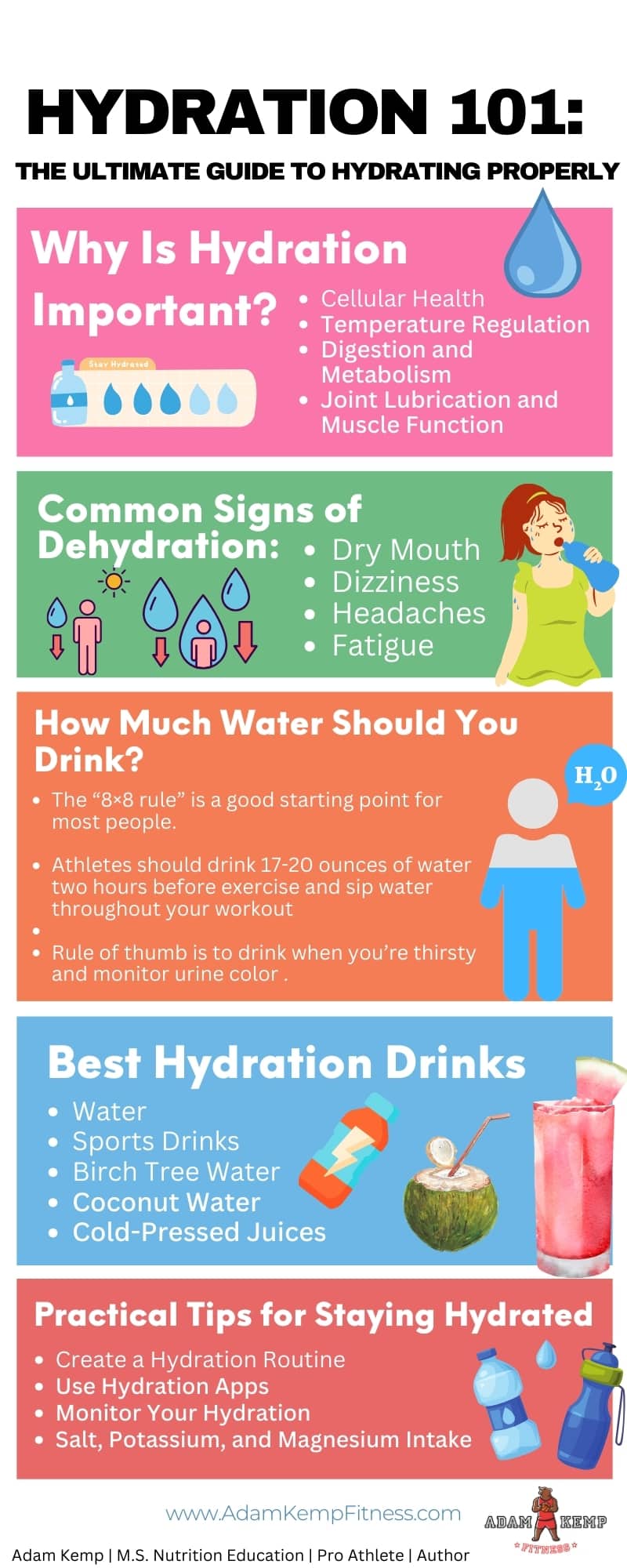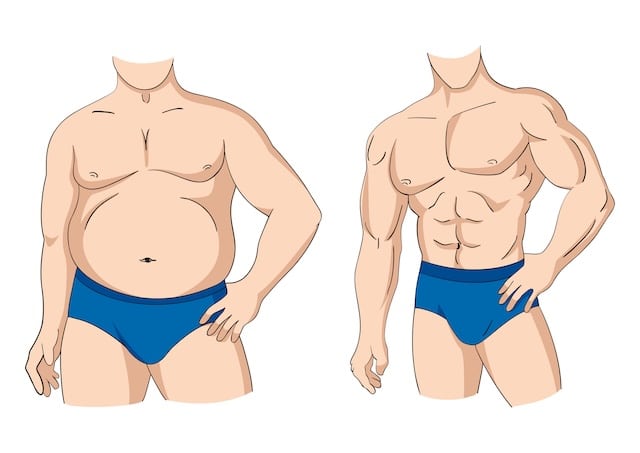How to Increase Metabolism Naturally and Burn More Calories!
If you’ve ever wondered how to increase metabolism naturally, the answer lies in a combination of smart nutrition, consistent movement, quality sleep, and daily habits that support your body’s energy systems.
Your metabolism—the process your body uses to convert food into energy—plays a major role in how easily you burn calories and manage your weight.
While genetics and age influence metabolic rate, science shows that you can naturally boost your metabolism through strategic lifestyle habits, dietary choices, and exercise routines.
A faster metabolism not only helps with fat loss but also supports better energy levels, hormone balance, and long-term health.
By making small, evidence-based changes to your daily routine, you can train your body to burn more calories efficiently—without relying on gimmicks or extreme diets.
What Is Your Metabolism?
Metabolism is the complex process your body uses to convert food into energy.
It includes all the biochemical reactions that occur within your cells to sustain life, from breaking down nutrients for fuel to repairing tissues and eliminating waste.
Your metabolism is constantly at work, even when you’re at rest, ensuring your body functions efficiently.
At its core, metabolism consists of two key processes: catabolism and anabolism.
Catabolism involves breaking down food and stored energy into smaller components, releasing energy in the process.
Anabolism, on the other hand, is the building and repair phase, where your body uses energy to create new cells, proteins, and other vital structures.
Your basal metabolic rate (BMR) is the number of calories your body burns at rest to support essential functions like breathing, circulation, and temperature regulation.
Factors such as age, muscle mass, genetics, and hormone levels influence your metabolism, determining how efficiently you burn calories throughout the day.
By understanding how your metabolism works, you can take strategic steps to optimize it—helping you burn calories faster and support long-term health.
What Factors Influence Metabolic Rate?
Your metabolic rate is influenced by a variety of factors, some of which you can control and others that are determined by genetics. Understanding these factors can help you make lifestyle changes to optimize your metabolism and improve calorie-burning efficiency.
Age
Metabolism naturally slows down with age due to a loss of muscle mass and changes in hormonal balance.
After age 30, your basal metabolic rate (BMR) decreases by about 1–2% per decade, making it more important to maintain muscle through resistance training and proper nutrition.
Muscle Mass
Muscle tissue burns more calories than fat, even at rest. The more lean muscle you have, the higher your metabolism will be.
Strength training and protein intake play a key role in preserving and building muscle, helping to keep your metabolic rate elevated.
Genetics
Your genetic makeup can determine how efficiently your body burns calories. Some people naturally have a faster metabolism due to inherited traits, while others may have a slower metabolic rate.
However, lifestyle choices still play a significant role in shaping metabolism over time.
Hormones
Hormonal imbalances, such as low thyroid hormone levels (hypothyroidism) or high cortisol from stress, can slow metabolism.
Conditions like hypothyroidism reduce the body’s ability to burn calories, while chronic stress and elevated cortisol levels can promote fat storage and muscle breakdown.
Activity Level
Regular movement, including exercise and daily activities, significantly influences metabolism.
High-intensity workouts, resistance training, and even non-exercise activities like walking, standing, and fidgeting contribute to increased calorie burn throughout the day.
Diet and Nutrition
The type of food you eat impacts metabolism. Protein has a high thermic effect of food (TEF), meaning your body burns more calories digesting protein compared to fats and carbohydrates.
Additionally, consuming enough calories prevents metabolic slowdown, while extreme calorie restriction can lower metabolic rate as your body tries to conserve energy.
Hydration
Water plays a crucial role in metabolic processes.
Even mild dehydration can slow metabolism, while drinking cold water can temporarily boost calorie burning as your body works to warm it up.
Sleep Quality
Poor sleep disrupts hormone regulation, increasing ghrelin (hunger hormone) and decreasing leptin (satiety hormone), which can lead to increased appetite and slower metabolism.
Quality sleep supports optimal metabolic function and overall energy balance.
Environmental Temperature
Exposure to cold temperatures can activate brown fat, a type of fat that burns calories to generate heat.
Activities like cold showers or spending time in cool environments may slightly boost metabolism.
Caffeine and Other Stimulants
Caffeine, found in coffee and certain teas, can increase metabolism by stimulating the central nervous system.
Some natural compounds, like green tea extract and capsaicin from chili peppers, may also provide a small metabolic boost.
By understanding these factors, you can make targeted adjustments to support a faster metabolism and more efficient calorie-burning process.
Myths About Metabolism: What Doesn’t Work
Many so-called metabolism hacks promise quick results but fail to stand up to science. Here’s a breakdown of common myths that need to be debunked:
- Eating Small Meals Frequently: While it’s often said that eating every few hours “stokes the metabolic fire,” total calorie intake—not meal frequency—determines metabolic rate. Eating six small meals doesn’t provide a metabolic edge over three balanced ones.
- Detox Teas and Quick Fixes: These are often high in diuretics and laxatives. They don’t improve metabolic rate and may cause dehydration or digestive distress. Real detoxification is done by your liver and kidneys—not tea bags. There are some effective natural detox drinks, but they are not quick fixes and are drinks that promote a healthier body and long-term detoxification efforts.
- Starvation Diets: Extreme calorie restriction lowers your basal metabolic rate over time. The body shifts into energy conservation mode, reducing energy output and increasing the likelihood of weight regain through metabolic adaptation.
- Using Adderall or Nicotine for Fat Loss: Both substances may suppress appetite temporarily but carry serious health risks. Nicotine increases cardiovascular stress, and Adderall is a controlled substance not intended for weight loss. Their metabolic impact is negligible compared to the health trade-offs.
Long-term metabolism support comes from real, sustainable lifestyle changes—not gimmicks or shortcuts.
Best Ways to Increase Your Metabolism

Here are the best tips for increasing your metabolism and burning calories faster, which can make weight loss easier!
Metabolism is the process by which your body converts food into energy. A higher metabolic rate means more calories burned, even while at rest.
Although genetics influence metabolism, research shows that lifestyle choices play a crucial role in how efficiently your body burns calories. Incorporating science-backed strategies into your daily routine can help boost metabolism and support long-term weight management.
Here are my favorite proven methods to naturally increase your metabolism and burn more calories!
Exercise Strategies for Increasing Metabolism

Physical activity is one of the most powerful tools for enhancing metabolic rate, both during and after movement.
Exercise burns calories in the moment, stimulates muscle growth, increases resting energy expenditure, and improves insulin sensitivity—all of which support long-term fat loss and metabolic health.
By incorporating strategic workouts into your routine, you can increase your metabolism and burn more calories throughout the day, even at rest.
Strength Training
Muscle tissue burns more calories than fat, making strength training one of the most effective ways to boost metabolism.
A study published in the Journal of Applied Physiology found that resistance training increased resting metabolic rate by approximately seven percent due to muscle growth.
Importantly, research indicates that compound movements elevated metabolic rate more than isolation exercises.
Full-body exercises such as deadlifts, kettlebell swings, snatches, squats, lunges, and push-ups activate large muscle groups, help build lean muscle, and sustain a higher calorie burn throughout the day.
High-Intensity Interval Training (HIIT)
High-intensity interval training workouts involve short bursts of intense exercise followed by brief recovery periods.
Research in the International Journal of Exercise Science found that HIIT can elevate metabolism for up to 24 hours post-exercise due to excess post-exercise oxygen consumption (EPOC).
Sprint intervals, jump rope sessions, and bodyweight circuits are excellent ways to incorporate HIIT into your fitness routine.
There are many effective interval workouts, but my go-to is Tabata Interval Workouts—which are short, intense, and incredibly efficient.
It is an evidence-based interval protocol that consists of 20 seconds of all-out effort followed by 10 seconds of rest, repeated for 8 rounds, totaling just 4 minutes.
Increasing Non-Exercise Activity Thermogenesis (NEAT)
Small movements throughout the day, such as walking, fidgeting, or standing, contribute to calorie burn.
A study in the Mayo Clinic Proceedings found that individuals with higher NEAT levels burned up to 2,000 more calories daily than those who were sedentary.
Taking the stairs, standing at a desk, or stretching frequently can contribute to increased calorie expenditure.
For office workers and other people who sit a lot, sitting for extended periods slows metabolism and reduces calorie expenditure.
Research in the European Journal of Preventive Cardiology found that standing burned approximately 50 more calories per hour than sitting.
Using a standing desk or taking frequent breaks from sitting can help counteract this effect.
Additionally, good posture activates core muscles and increases daily energy expenditure.
Sitting and standing with proper alignment can contribute to a higher metabolic rate.
By implementing these scientifically supported methods, you can increase your metabolism, burn more calories, and improve your overall health.
Small daily changes can lead to significant improvements in energy levels, body composition, and metabolic efficiency over time.
Sprinting
Sprinting activates fast-twitch muscle fibers, which require more energy than slow-twitch fibers.
A study in The Journal of Strength and Conditioning Research found that sprinting significantly increased post-exercise calorie burn.
Short sprint workouts can be a powerful metabolic booster.
Wear a Sauna Suit During Exercise
When we wear a sauna suit while exercising, our body temperature rises, and we start to sweat profusely.
This sweating can help to release toxins from the body and also help to burn more calories.
A study published in the Journal of Strength and Conditioning Research found that wearing a sauna suit during exercise increased energy expenditure by up to 13%.
Moreover, sauna suits can also help to reduce water weight and bloating.
The sweating caused by the sauna suit can help to flush out excess water from the body, leading to a reduction in water weight and bloating.
However, it is important to note that the weight loss resulting from wearing a sauna suit is mostly water and not fat loss.
Despite the potential benefits of wearing a sauna suit during exercise, it is essential to take precautions to avoid dehydration.
Sweating excessively can lead to a loss of fluids and electrolytes, which can cause dehydration and other health problems.
Therefore, it is important to stay hydrated while wearing a sauna suit and to take frequent breaks to cool down and rehydrate.
Wearing a sauna suit while exercising can increase energy expenditure, promote sweating, and potentially help with water weight loss.
However, it is important to use caution and stay hydrated while wearing a sauna suit to avoid dehydration and other health risks.
Dietary Tips for Increasing Metabolism
What you eat plays a critical role in how efficiently your body burns calories.
Certain foods require more energy to digest, absorb, and metabolize—a phenomenon known as the thermic effect of food (TEF).
Others help regulate blood sugar, reduce inflammation, and support muscle maintenance, all of which contribute to a faster and more efficient metabolism.
By choosing the right nutrient-dense foods and avoiding common dietary pitfalls, you can enhance metabolic function and support sustainable fat loss.
Foods That Increase Metabolism and Burn Fat
Some foods naturally require more energy to digest, absorb, and metabolize—a concept known as the thermic effect of food (TEF).
Incorporating these nutrient-dense foods can slightly increase calorie expenditure and support fat loss when combined with a healthy lifestyle.
Although these foods won’t torch fat on their own, they work synergistically with exercise, quality sleep, and proper hydration to support a faster metabolism.
Chili Peppers (Capsaicin)
Capsaicin—the compound that gives chili peppers their heat—has been shown to increase thermogenesis and fat oxidation.
A study in Chemical Senses found that consuming capsaicin increased metabolic rate by approximately eight percent.
Adding spices such as cayenne pepper or hot sauce to meals may provide a small but beneficial metabolic boost.
Protein-Rich Foods
Protein has the highest thermic effect of food (TEF), meaning your body burns more calories digesting it compared to fats and carbohydrates.
A study in the Journal of Obesity and Metabolic Syndrome found that protein intake increased energy expenditure by approximately 20 to 30 percent.
Consuming protein-rich foods such as eggs, chicken, fish, and legumes can help support muscle maintenance and calorie burning.
Fiber-Rich Foods
Fiber-rich foods support metabolism by slowing digestion, improving insulin sensitivity, and increasing satiety—all of which help regulate energy balance and calorie intake.
Additionally, the body uses more energy digesting high-fiber foods compared to low-fiber, processed options, resulting in a modest but meaningful increase in the thermic effect of food (TEF).
Here are some of the most effective fiber-rich foods that support metabolic function:
- Oats: A complex carbohydrate loaded with soluble fiber, especially beta-glucan, which helps regulate blood sugar and promotes fullness.
- Brown Rice: Contains both insoluble and soluble fiber, helping regulate digestion and blood sugar while supplying sustained energy.
- Quinoa: A complete protein and fiber-rich grain that aids in digestion and increases TEF through its complex nutrient profile.
- Sweet Potatoes: High in both fiber and resistant starch, which supports gut health and improves insulin response.
- Lentils and Legumes (Beans, Chickpeas, Peas): Packed with fiber and plant-based protein, these foods increase TEF and promote gut microbiome diversity.
- Berries (Raspberries, Blackberries, Blueberries): Loaded with antioxidants and fiber, berries slow carbohydrate absorption and may reduce post-meal blood sugar spikes.
- Avocados: High in fiber and healthy fats, avocados help regulate blood sugar, digestion, and nutrient absorption.
- Cruciferous Vegetables (Broccoli, Brussels Sprouts, Cauliflower): These vegetables are rich in fiber and also contain glucosinolates that support liver detoxification and overall metabolic health.
- Chia Seeds and Flaxseeds: These seeds provide a concentrated source of soluble and insoluble fiber, supporting digestion and prolonged satiety.
Incorporating a variety of fiber-rich foods into your diet not only helps manage blood sugar and appetite but also enhances the body’s calorie-burning efficiency through increased digestive effort and improved hormonal signaling.
Coconut Oil
Rich in medium-chain triglycerides (MCTs), coconut oil may temporarily boost metabolism more than long-chain fats by being quickly converted to energy.
Unlike other dietary fats, MCTs are absorbed rapidly and transported directly to the liver, where they are used as a quick fuel source rather than being stored as fat.
Research suggests that replacing some long-chain fats with MCTs can slightly increase daily energy expenditure and support fat oxidation.
While the effect is modest, including coconut oil in moderation—as part of a balanced, nutrient-dense diet—may contribute to improved metabolic efficiency.
Try Intermittent Fasting
Intermittent fasting has been shown to improve fat oxidation and metabolic efficiency.
A study in Clinical Diabetes and Endocrinology found that fasting led to increased fat burning and improved insulin sensitivity.
Methods such as the 16:8 fasting protocol can support metabolic health and help increase your metabolism.
Drinking More Water
Hydration plays a crucial role in metabolic function.
Drinking enough water is essential for maintaining good health and has been proposed as a potential strategy for weight loss.
Adequate hydration is essential for many metabolic processes, including the breakdown and burning of calories.
When dehydrated, our body’s metabolic rate slows down, and the fat-burning process is impaired.
This can lead to weight gain and difficulties losing weight.
Research has shown that drinking water can help boost metabolism and aid in weight loss.
Drinking water before meals may help reduce calorie intake by making you feel full and reducing hunger.
A study on overweight women found that drinking 500 ml of water three times a day, half an hour before meals, for eight weeks significantly decreased body weight, body mass index, and body composition scores.
Another study found that drinking 500 ml of water 30 minutes before meals resulted in 44% greater weight loss over 12 weeks than those who did not drink water before meals.
Additionally, a study conducted a systematic review of randomized clinical trials to evaluate the effect of water consumption on weight loss found that all clinical trials reported weight loss effects, with the most effective intervention among the studies being the replacement of caloric beverages with water.
These results suggest that staying hydrated can play a role in weight loss by boosting metabolism and aiding in calorie burning through water-induced thermogenesis and promoting satiety.
While drinking water can be an effective tool for weight loss, it is important to remember that it is not a magic solution.
It is still essential to maintain a balanced diet and engage in regular exercise for optimal weight management.
Moreover, it is essential to stay hydrated throughout the day by drinking plenty of water and fluids to support overall health and well-being.

Consuming Caffeine
Caffeine is a natural stimulant that enhances metabolic rate by increasing thermogenesis and mobilizing fat from fat tissues to be used as energy.
It stimulates the central nervous system, increases adrenaline levels, and temporarily raises resting energy expenditure, making it one of the most widely studied and effective metabolism-boosting compounds.
Additionally, caffeine can increase energy levels and improve exercise performance.
When used strategically—especially before workouts—caffeine-containing beverages can provide a meaningful metabolic lift.
However, moderation is key.
Excessive caffeine intake can disrupt sleep, increase anxiety, and elevate cortisol levels, which may counteract metabolic benefits.
Aim for 100–300mg of caffeine per day from clean sources, and avoid consuming it within 6 hours of bedtime to protect your sleep and hormonal balance.
Green Tea
There are a lot of good types of tea for weight loss, but green tea is probably the best.
The beneficial effects of green tea for weight loss have been attributed to its active compounds, particularly epigallocatechin gallate (EGCG).
EGCG has been shown to increase thermogenesis, which is the process of heat production in the body, by activating brown adipose tissue (BAT) and increasing the activity of enzymes involved in fat oxidation.
A study published in the American Journal of Clinical Nutrition found that consuming green tea extract containing high amounts of EGCG increased 24-hour energy expenditure and fat oxidation by up to 4.6% and 17%, respectively.
Moreover, the caffeine content in green tea can also contribute to its weight loss benefits.
A study published in the Journal of Strength and Conditioning Research found that caffeine consumption improved exercise performance and increased energy expenditure during exercise.
The combination of caffeine and EGCG in green tea can, therefore, have a synergistic effect on metabolism and weight loss.
Furthermore, there are several other health benefits of green tea, including reduced inflammation, improved insulin sensitivity, and reduced risk of cardiovascular disease.
Research shows that green tea consumption is associated with reduced body fat and waist circumference in overweight and obese individuals.
Incorporating green tea into your diet and specifically drinking green tea before working out, can help increase metabolism, promote fat oxidation, improve exercise performance, and have several other health benefits.
However, it is important to note that excessive green tea or green tea extract supplement consumption can have adverse effects, and moderation is key.
Black Coffee
Black Coffee is one of the most popular and effective caffeine sources.
It’s low in calories and high in antioxidants, and when consumed without added sugars or creamers, it can increase energy levels, improve workout performance, and support fat oxidation.
Drinking a cup of black coffee 30–60 minutes before exercise may maximize calorie burn and workout endurance.
Oolong Tea
Oolong Tea is a traditional Chinese tea that combines qualities of both green and black tea.
It contains caffeine as well as polyphenols that have been shown to enhance fat metabolism.
Some studies suggest that oolong tea may increase energy expenditure by up to 3% and support body fat reduction over time.
Yerba Mate Tea
Yerba Mate Tea is a South American herbal tea known for its smooth, sustained energy boost. It contains caffeine, theobromine, and other bioactive compounds that may promote fat breakdown and suppress appetite.
Several studies have associated yerba mate with improved exercise performance and reduced fat accumulation.
Celsius Energy Drinks
Celsius Energy Drinks are formulated with a blend of caffeine, green tea extract, guarana, and other thermogenic ingredients.
These drinks are renown for their ability to increase calorie burning and improve workout performance.
Unlike many commercial energy drinks, Celsius is free from artificial preservatives and added sugars, making it a more metabolism-friendly option.
Last update on 2025-07-08 / This article includes affiliate links/Images via Amazon Product Advertising API. I may earn commissions on purchases made through these links.
RSP AminoLean
RSP AminoLean is a multi-functional pre-workout and metabolism support supplement that combines natural caffeine from green tea with amino acids and metabolism-boosting ingredients like CLA and L-carnitine.
It offers a clean energy boost without the jitters, while also supporting fat metabolism and lean muscle maintenance.
Last update on 2025-07-08 / This article includes affiliate links/Images via Amazon Product Advertising API. I may earn commissions on purchases made through these links.
Consume More Omega-3 Fatty Acids
Omega-3 fatty acids help regulate metabolism and reduce inflammation.
A study in PLoS One found that omega-3 supplementation increased resting metabolic rate and fat oxidation.
Fatty fish like salmon and walnuts are excellent sources of omega-3s.
Eat Spicy Foods
Capsaicin, a compound found in chili peppers, has been shown to increase calorie expenditure by raising body temperature.
A study in Chemical Senses found that consuming capsaicin increased metabolic rate by approximately eight percent.
Adding spices such as cayenne pepper or hot sauce to meals may provide a small but beneficial metabolic boost.
Consume More Probiotics
A balanced gut microbiome plays a key role in metabolism, and consuming probiotic-rich foods and supplements can increase fat oxidation and calorie burning.
Probiotics help regulate appetite hormones, reduce systemic inflammation, and improve nutrient absorption—factors that collectively support a faster, more efficient metabolism.
Foods high in probiotics, such as yogurt, kimchi, kefir, and kombucha, support gut health by promoting microbial diversity and digestive efficiency.
If you’re looking for a convenient and effective supplement, BIOHM Super Greens & Probiotics is an excellent choice.
It combines a diverse probiotic strain profile with digestive enzymes and alkalizing greens to support gut health and metabolic function in one daily scoop.
Last update on 2025-07-08 / This article includes affiliate links/Images via Amazon Product Advertising API. I may earn commissions on purchases made through these links.
Drinking Apple Cider Vinegar
Apple cider vinegar has been linked to improved metabolic function.
A study in Bioscience, Biotechnology, and Biochemistry found that vinegar consumption reduced body fat and increased fat oxidation.
Consuming a small amount of apple cider vinegar (1-2 tbsbs) before meals may increase metabolism.
Enjoy Metabolism-Boosting Breakfast Smoothies
If you’re looking to shed those extra pounds and boost your metabolism, adding protein-rich smoothies to your breakfast routine can be an excellent way to achieve your goals.
Protein is one of the essential macronutrients that the body needs to function correctly.
It is well-known for its ability to help you feel fuller for longer periods, which reduces the risk of overeating and unhealthy snacking.
Consuming protein-rich smoothies for breakfast can help kickstart your metabolism, which is how your body converts food into energy.
Research suggests that protein requires more energy to digest than carbohydrates and fats.
This process is known as the thermic effect of food (TEF), and it increases your body’s calorie-burning potential.
A higher metabolic rate leads to increased energy expenditure, promoting weight loss.
Here are several ingredients you can use to make protein-rich smoothies for a metabolism-boosting breakfast:
- Greek Yogurt: Greek yogurt is an excellent source of protein, with around 15-20 grams of protein per 6-ounce serving. It also adds a creamy texture to your smoothie.
- Nut Butters: Peanut butter, almond butter, or any other nut butter can add a delicious flavor and protein to your smoothie. Two tablespoons of peanut butter contain around 8 grams of protein.
- Protein Powder: Several types of protein powder are available, such as whey, casein, soy, and pea protein. When comparing plant protein to whey protein, I generally prefer plant protein due to its added fiber and micronutrient content. One scoop of protein powder contains around 20-25 grams of protein.
- Chia Seeds: Chia seeds are an excellent source of plant-based protein and healthy dietary fats. Two tablespoons of chia seeds contain around 4 grams of protein.
- Spinach: Spinach is a leafy green vegetable that contains around 2-3 grams of protein per cup. It also adds a nutrient boost to your smoothie.
- Milk or Milk Alternatives: Milk, soy milk, almond milk, or any other milk alternative can add protein to your smoothie. One cup of milk contains around 8 grams of protein.
Combining these ingredients can create a protein-rich breakfast smoothie that is both delicious and nutritious.
In addition to protein, you can incorporate superfoods for weight loss, such as matcha, spirulina, or acai berries, into your smoothies.
These powders contain several nutrients and antioxidants that offer various health benefits.
For example, you can use spirulina for weight loss because research demonstrates that spirulina has anti-inflammatory and antioxidant effects, which can help reduce inflammation and promote fat burning.
Furthermore, research has shown that high-protein diets significantly reduce body weight, BMI, and waist circumference compared to lower-protein diets because consuming a diet high in protein can help you feel fuller for longer, reducing calorie intake throughout the day.
Moreover, the thermogenic properties of various superfood powders can enhance the calorie-burning potential of protein-rich smoothies.
Therefore, incorporating protein-rich smoothies with metabolism-boosting superfood powders into your breakfast routine can be an effective strategy for weight loss and boosting metabolism.
My favorite superfood powder is Bloom Greens & Superfoods.
Last update on 2025-07-08 / This article includes affiliate links/Images via Amazon Product Advertising API. I may earn commissions on purchases made through these links.
However, it is essential to note that a healthy diet and lifestyle require a combination of dietary changes, regular physical activity, and behavioral modifications.
One of the negatives of superfood powders is that people often believe they are a replacement for a healthy diet and exercise strategy.
Superfood powders should only be used as an addition to other healthy habits that support weight loss.
Starting your day with a delicious and nutritious protein-rich smoothie can increase your metabolism and help you burn calories faster!
Avoiding Extreme Calorie Restriction to Prevent Metabolic Slowdown
Severe calorie restriction signals the body to conserve energy, slowing metabolism.
Research demonstrates that prolonged calorie deficits result in a significant drop in resting metabolic rate, which is known as metabolic adaptations to weight loss.
Eating enough nutrient-dense foods while maintaining a moderate calorie deficit supports sustainable fat loss.
Best Supplements to Boost Metabolism
While no supplement will override poor lifestyle habits, certain compounds can complement an already healthy routine and modestly increase metabolism:
- Green Tea Extract: Rich in catechins like EGCG, green tea extract can enhance fat oxidation and calorie burning—especially when paired with exercise.
- Caffeine: Caffeine stimulates the central nervous system, boosts energy, and increases thermogenesis. It’s most effective pre-workout, and works synergistically with green tea extract.
- Capsaicin: Found in spicy peppers or supplement form, capsaicin promotes thermogenesis and fat oxidation. It may also reduce appetite.
- L-Carnitine: This amino acid helps transport fatty acids into mitochondria for energy production. While its effect is modest, it may aid fat metabolism when combined with exercise.
- Conjugated Linoleic Acid (CLA): Found naturally in meat and dairy, CLA supplements may modestly support fat loss and lean mass retention in some individuals.
- Chromium Picolinate: A trace mineral that may improve insulin sensitivity and carbohydrate metabolism, although effects are generally mild and best for individuals with glucose management issues.
Always consult a healthcare provider before starting any supplement regimen—especially if you’re managing chronic conditions or taking medications.
Lifestyle and Behavioral Strategies to Increase Your Metabolism

Beyond diet and exercise, your daily habits and routines play a critical role in how efficiently your body burns calories.
Sleep quality, stress levels, sunlight exposure, and even your gut health can all influence hormone balance, energy expenditure, and metabolic rate.
Small behavioral changes, when practiced consistently, can create a powerful foundation for long-term metabolic health and sustainable fat loss.
These effective metabolism boosting and fat-loss strategies support your body’s natural rhythms and help optimize energy use throughout the day.
Getting Enough Sleep
Poor sleep can disrupt hormone levels and slow metabolism.
Research in Nutrients found that sleep deprivation reduced the body’s ability to burn fat while increasing cravings for high-calorie foods.
Aim for seven to nine hours of quality sleep per night to support metabolic health.
Sleep is one of the most underrated tools for metabolic health.
Quality rest helps regulate hormones like cortisol, ghrelin, and leptin, which control appetite, energy storage, and fat burning.
Without enough sleep, your body becomes more insulin resistant, your hunger increases, and your ability to burn calories efficiently drops.
Research in Nutrients has found that sleep deprivation reduced the body’s ability to burn fat while increasing cravings for high-calorie foods.
Sleep also supports muscle recovery and thyroid function—two major factors in maintaining a healthy metabolism.
Even one night of poor sleep can reduce your resting energy expenditure and increase cravings for sugar and processed foods.
To improve your sleep and support metabolic health, focus on the following habits:
- Follow a consistent sleep schedule—go to bed and wake up at the same time every day.
- Avoid caffeine and alcohol in the evening, as both can disrupt sleep architecture and reduce sleep quality.
- Create a relaxing wind-down routine—try light stretching, reading, or meditation instead of screens.
- Optimize your sleep environment by keeping your room dark, cool (60–67°F), and quiet.
- Use natural sleep aids when needed, such as magnesium glycinate, tart cherry juice, or calming herbal teas like chamomile and lavender.
For extra support, supplements like Rootcha Zinc & Magnesium and Qunol Magnesium Glycinate promote deeper sleep and muscle relaxation.
Last update on 2025-07-08 / This article includes affiliate links/Images via Amazon Product Advertising API. I may earn commissions on purchases made through these links.
Adaptogens for sleep, like ashwagandha, can reduce cortisol, while melatonin helps regulate your sleep-wake cycle.
Better sleep isn’t just about feeling rested—it’s a foundational behavior that helps your body burn calories more efficiently, manage appetite, and support long-term fat loss.
Prioritizing high-quality rest can make every other aspect of your health routine more effective.
Cold Exposure to Activate Brown Fat
Exposure to cold temperatures can stimulate brown fat, a type of fat that burns calories to generate heat.
A study in NIH Research Matters found that exposure to cold temperatures increased brown fat activity and calorie burn.
Taking cold baths, contrast showers, or spending time in cooler environments may help activate this process.
Managing Stress and Controling Cortisol Levels
Chronic stress raises cortisol levels, which can lead to fat storage and a slowed metabolism.
A study in The Journal of Clinical Endocrinology & Metabolism found that elevated cortisol levels were associated with reduced metabolic efficiency.
Incorporating natural stress-reducing remedies like meditation, deep breathing, prayer, or progressive muscle relaxation can help regulate hormones and maintain a healthy metabolism.
Getting More Sunlight
Vitamin D deficiency has been linked to slower metabolism, and higher vitamin D levels were associated with higher energy expenditure.
Spending time outdoors or taking vitamin D supplements can help maintain optimal levels, but sunlight is the best source of vitamin D.
Final Thoughts: Can You Permanently Increase Your Metabolism?

Metabolism isn’t a fixed number—it adapts based on lifestyle, environment, and nutrition over time. However, while you can improve your metabolic rate, you can’t “permanently” boost it in a way that locks it at a higher level forever.
The body naturally adapts to weight loss, calorie restriction, and changes in physical activity through a process known as metabolic adaptation.
This is your body’s way of conserving energy when it perceives a threat, like prolonged dieting or rapid weight loss.
Over time, your resting energy expenditure can decline, making it harder to continue losing fat or maintain a lower weight.
Fortunately, consistent strength training, a high-protein diet, adequate sleep, and stress management can help reverse or prevent metabolic slowdown.
The key to sustainable metabolic health isn’t finding a “reset button”—it’s building long-term, adaptive habits that keep your body metabolically active without overtaxing it.
However, it is important to remember that these strategies should not be seen as a substitute for a well-balanced diet and regular exercise.
High protein intake can increase the thermic effect of food, which can boost metabolism and aid in weight loss.
Including superfood powders like spirulina and chia seeds can provide additional benefits due to their high antioxidant content that helps reduce inflammation in the body.
Green tea is a great addition to any weight loss regimen as it contains compounds like EGCG that can help increase metabolism and promote fat oxidation.
Its caffeine content can also improve energy levels and exercise performance.
Wearing a sauna suit while exercising can increase sweating and body temperature, leading to more calorie burn.
However, staying hydrated while using a sauna suit is essential to avoid dehydration because it can be dangerous.
Yoga can be an effective tool for weight loss and increasing metabolism, as it helps reduce stress and anxiety that can lead to overeating and weight gain.
Yoga before bed can also promote better sleep, which is crucial for maintaining a healthy weight.
Incorporating these strategies for burning calories faster into your lifestyle can help you achieve your weight loss goals.
However, they should be considered part of a customized weight loss plan that includes a balanced diet and regular physical activity.
With consistent effort and dedication, you can achieve a healthy weight and maintain it long-term.
This website does not provide medical advice. This website site does contain affiliate links, and purchases may earn a commission.
Read my Medical Disclaimer, Review Disclaimer, and Publishing Policies for more details. Use of this site indicates acceptance of these terms.








